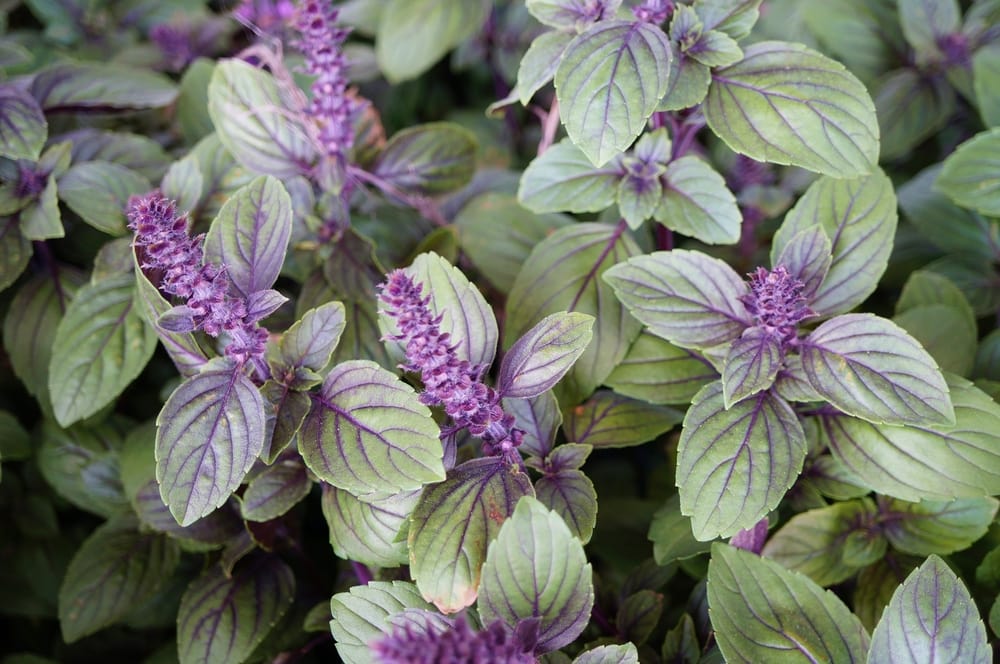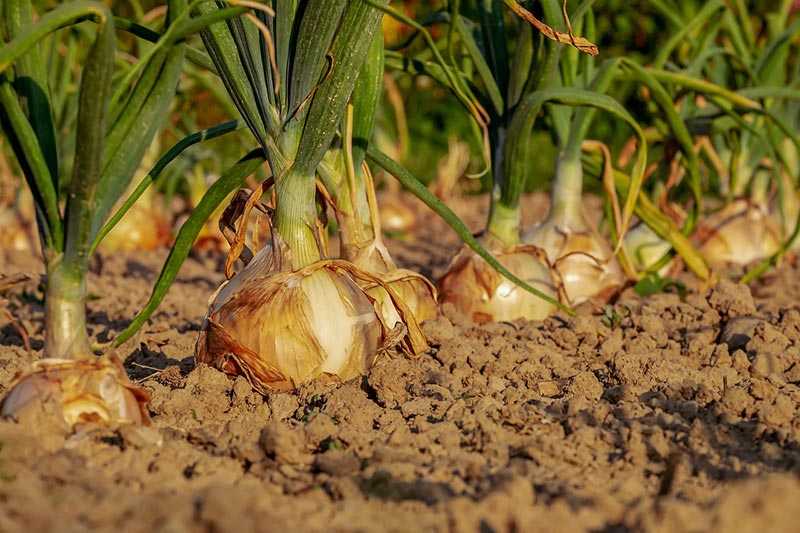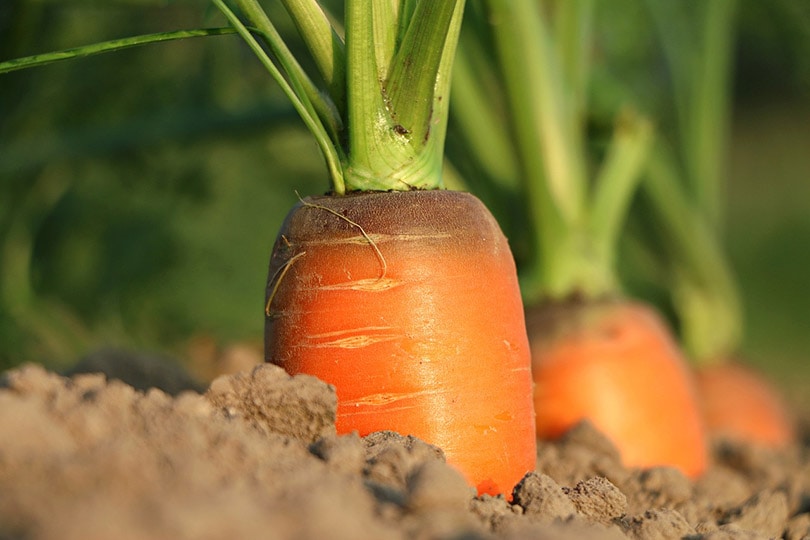8 Companion Plants for Dill (With Pictures)
-
Pete Ortiz
- Last updated:

If you’re looking to improve the yield of your dill plants, you should consider companion planting. Companion planting is a method of gardening that involves pairing plants together for mutual benefit. Not only do the plants complement each other visually, but they also help improve yields, deter pests, and increase overall health.
There are many herbs and vegetables that make great companions for dill plants. Here we’ll be discussing some of the best ones. With a little bit of research, you can create a thriving dill garden with beautiful blooms and healthy plants!
The 8 Companion Plants for Dill
1. Basil

| Native Region: | Central Africa, Southeast Asia |
| USDA Growing Zone: | 5A |
| Height: | 12 to 24 inches |
| Sun Exposure: | 6 to 8 hours a day |
Basil is a great companion plant for dill because it helps to repel aphids and other pests. The two herbs also have a symbiotic relationship, as dill attracts bees which help pollinate basil flowers. When planting, be sure to leave enough space between the dill and basil plants so that they have room to grow.
2. Onions

| Native Region: | Southwestern Asia |
| USDA Growing Zone: | 5 to 7 |
| Height: | 2.5 to 6 feet |
| Sun Exposure: | 8 to 10 hours a day |
Onions are great dill companions for many reasons. First, dill helps to repel onion root maggots, a common pest that can decimate an onion crop. Dill also improves the flavor of onions when the two are grown together. On the other hand, dill helps onions by improving their drainage. Just be sure to give each plant enough space to grow.
3. Cabbage

| Native Region: | Western Europe |
| USDA Growing Zone: | 1 to 10 |
| Height: | 6 to 7 feet |
| Sun Exposure: | 6 to 8 hours a day |
Dill helps keep cabbage worms at bay so your cabbage foliage remains lush and intact. When dill and cabbage are planted close together, the former acts as a living mulch. This means that dill suppresses weeds and retains moisture in the soil around cabbage plants. Simply put, dill makes an excellent companion for cabbage!
4. Asparagus

| Native Region: | Northern Africa, Western Asia |
| USDA Growing Zone: | 2 to 8 |
| Height: | 3 to 4 feet |
| Sun Exposure: | 6 to 10 hours a day |
Dill is known to improve the yield and flavor of asparagus. When dill and asparagus are grown together, they also help to keep aphids away. As dill matures, it provides much-needed shade for asparagus plants. Your main job will be to ensure each plant has enough room to grow, as dill can quickly overtake asparagus if left unchecked.
5. Cucumber

| Native Region: | South Asia |
| USDA Growing Zone: | 4 to 12 |
| Height: | 3 to 12 feet |
| Sun Exposure: | 6 to 8 hours a day |
Like dill, cucumbers are known to attract bees. This is beneficial because bees help pollinate cucumber flowers. In addition, dill attracts wasps and bees that are predatory to cucumber beetles, a common cucumber pest. When you grow both plants together, they’ll also help to improve the flavor of each other. So if you’re looking for delicious veggies, be sure to pair dill with cucumbers!
6. Brussel Sprouts

| Native Region: | Central and Southern Europe |
| USDA Growing Zone: | 3 to 10 |
| Height: | 1.5 to 2 feet |
| Sun Exposure: | 6 to 8 hours a day |
Dill provides many benefits to Brussels sprouts. For one, it helps to repel cabbage root flies, a common pest of brassica plants. What’s more, dill improves the flavor of Brussels sprouts when the two are grown together. Plus, it also attracts bees to pollinate the Brussel sprouts.
7. Collards

| Native Region: | Eastern Mediterranean and Asia Minor |
| USDA Growing Zone: | 6 to 10 |
| Height: | 2 to 3 feet |
| Sun Exposure: | 6 to 8 hours a day |
Dill attracts wasps that prey on the cabbage worms that attack collards. In doing so, dill helps to protect collards from this common pest. Collards, on the other hand, help dill by providing shade and shelter. When growing dill and collards together, be sure to give each plant enough space so that they can thrive.
8. Garlic

| Native Region: | Middle Asia |
| USDA Growing Zone: | 1 to 4 |
| Height: | 18 to 24 inches |
| Sun Exposure: | 6 to 8 hours a day |
Garlic is known to repel many pests, including dill’s number one enemy: the dill root fly. What’s more, dill improves the flavor of garlic when the two are grown together. So if you’re looking for a safe and effective way to repel pests, be sure to plant dill and garlic together.
Worst Companion Plants for Dill
Not every plant will do well while planted together with dill. The following are some of the worst companion plants for dill.
1. Tomatoes

Tomatoes are great plants to add to your garden, but not when you have dill. First, dill will stunt your tomatoes affecting their yield. Worse, its flowers are a magnet for wasps that harbor the tomato hornworm. This will most definitely destroy your tomato plants.
2. Carrots and Cilantro

These veggies belong to the same family as dill and can therefore cross-pollinate. When this happens, you can expect low yields and altered taste, which isn’t pleasant.
3. Fennel

This also cross-pollinates with dill leading to a bad taste in both vegetables.
4. Brussels sprouts

Apart from wasps, dill also attracts cabbage worms. Brussels sprouts are easily damaged by cabbage worms. Cabbage, cauliflower, and broccoli are also attacked by cabbage worms and thus should not be planted together with dill.
Final Thoughts
As you can see, there are many great companion plants for dill. Each one offers its own unique benefits that can help dill thrive. So if you’re looking for a way to improve the yield and flavor of your dill crop, be sure to plant some of these companion plants alongside it.
However, be sure to give each plant enough space and the attention they require.
That means dill may need a little more room to grow if you have other plants competing for space. But with a little care, enough water, and attention, you can create a beautiful and productive garden. Thanks for reading, and happy gardening!
Featured Image Credit: Hans, Pixabay
Contents


